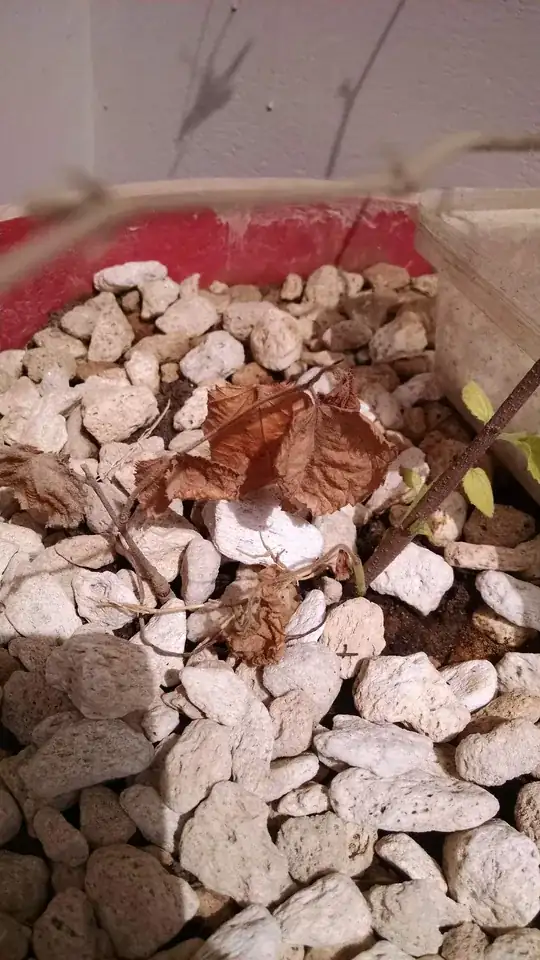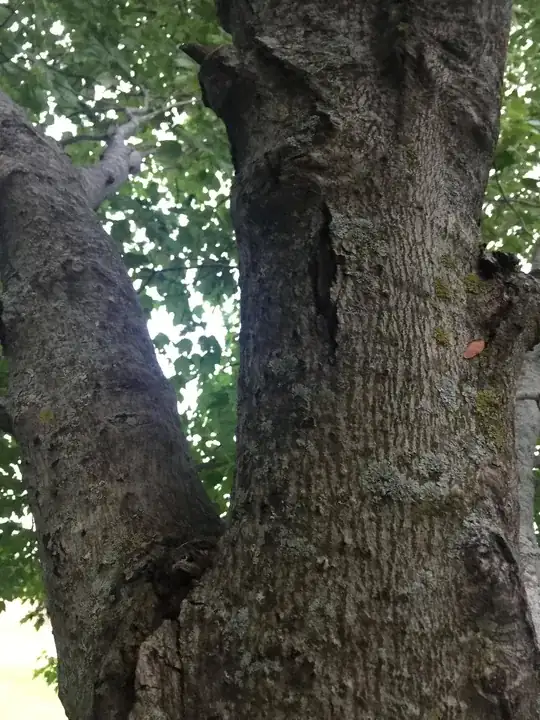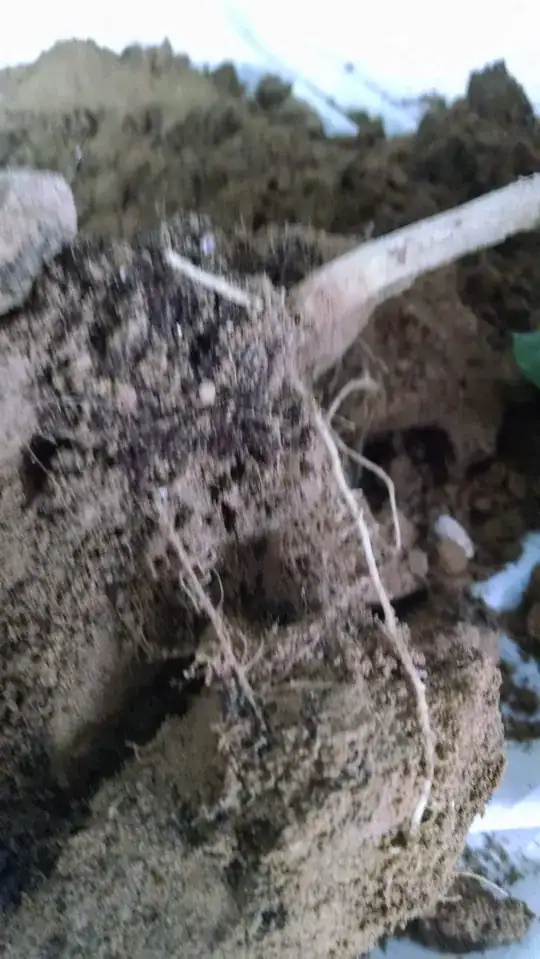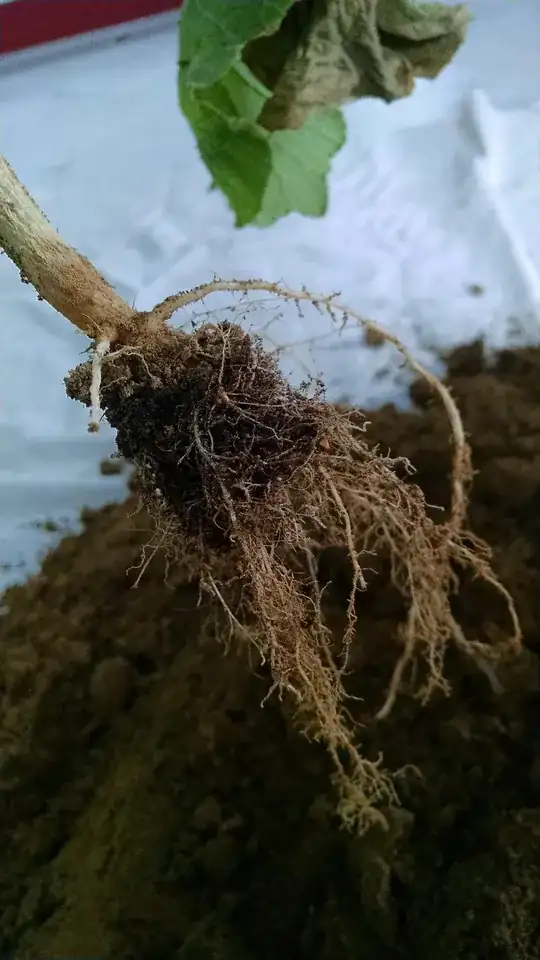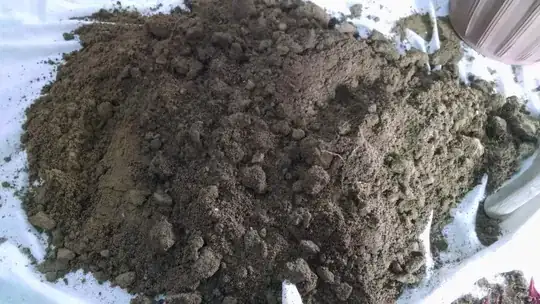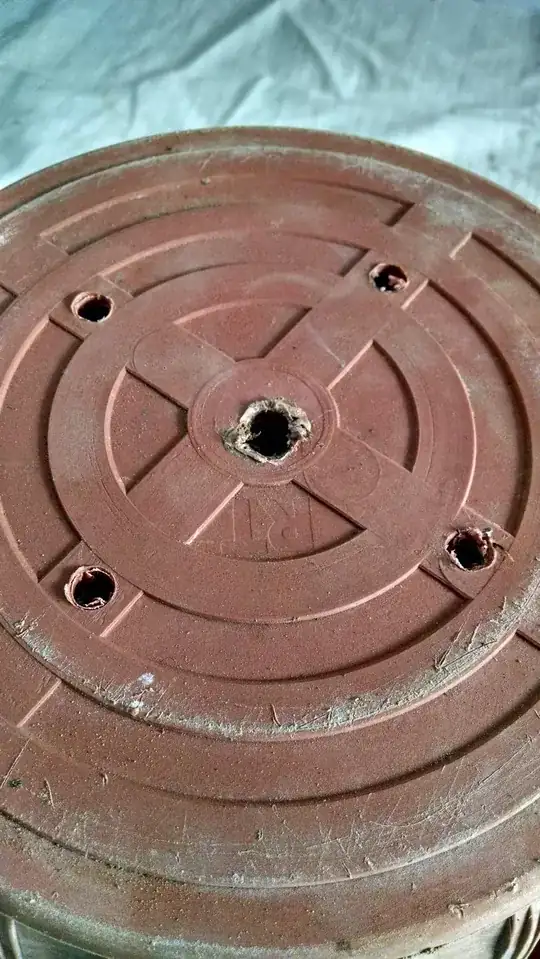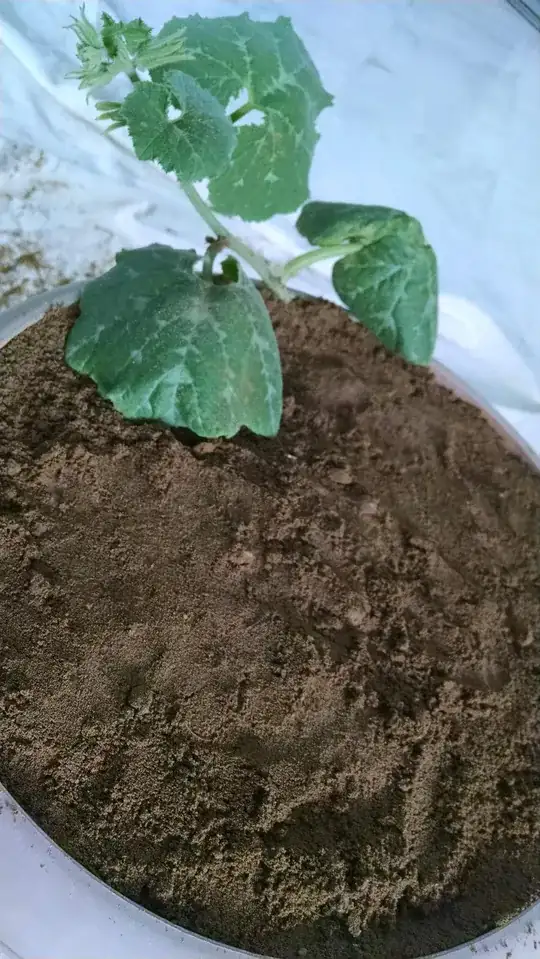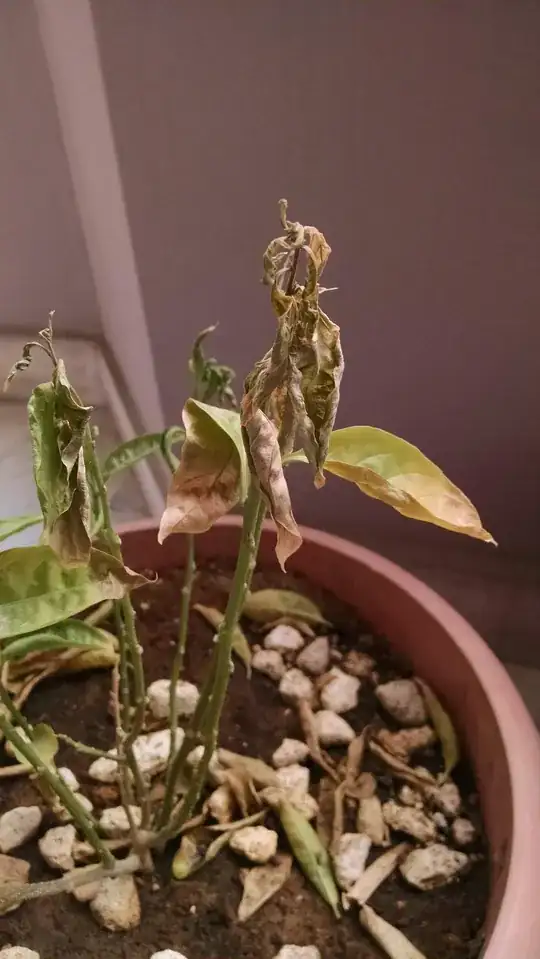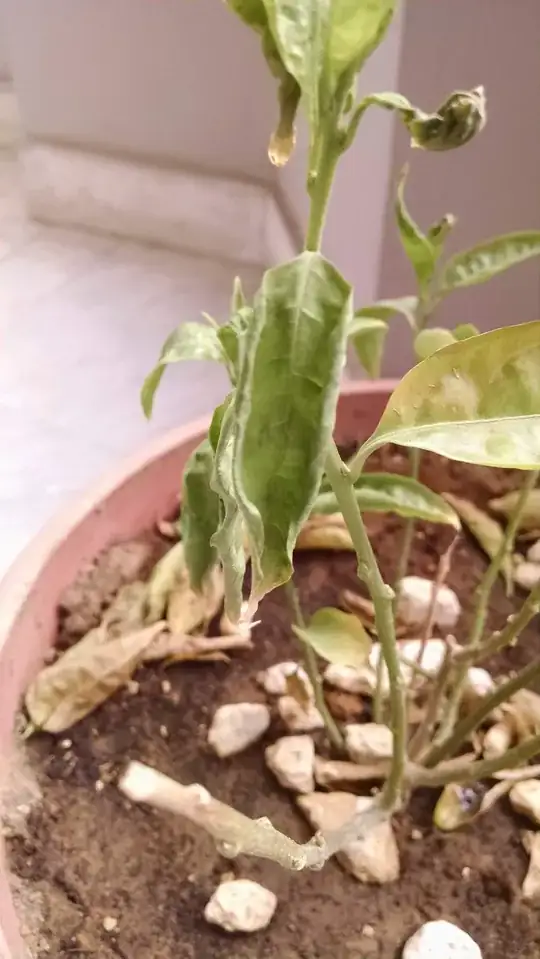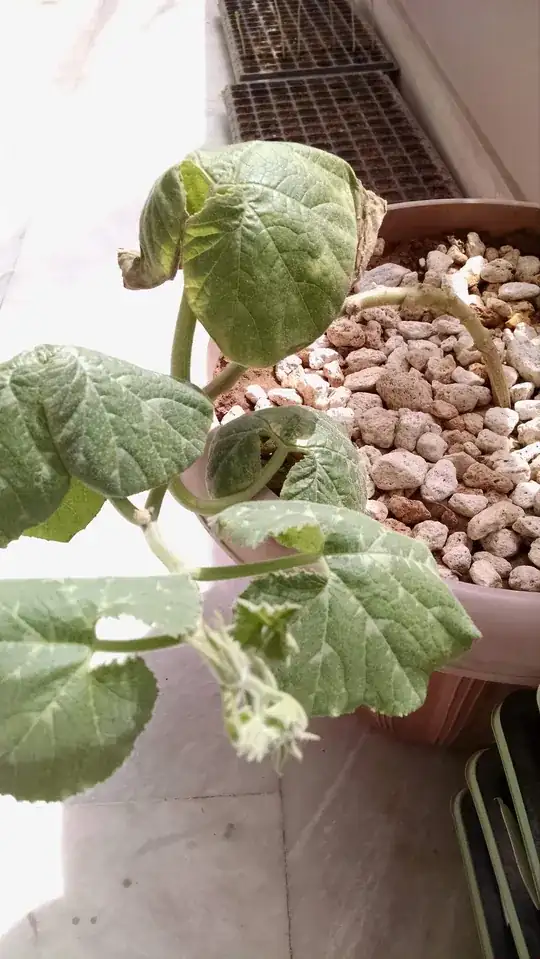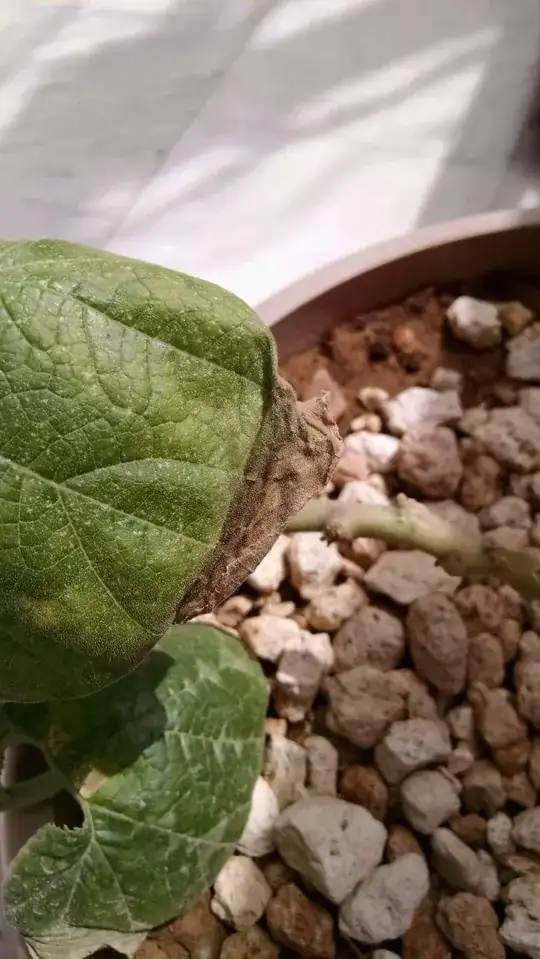Only sterilized potting soil should be used in pots. Never ever make your own soil.
Your plants show symptoms of too much water. Soil chemistry is off. Too little light. Pathogens and insects with no checks and balances. You've got great little 'condos' for any immigrant that came with the soil with the rocks on top of the soil.
Are there drain holes in the bottom of those pots? Did you use those rocks/gravel at the bottom beneath the soil and the bottom of the pot? Have you used any fertilizer at all? Are these plants indoors? Have they been out of doors? Are those trays for starting seeds?
The first thing we will advise you to do is get a good source of potting soil, in bags, sterilized. Make sure there is no fertilizer added to that soil. Make sure there is no water holding gimmicks such as gels or sponges. Plain, sterilized 'medium' there is very little actual soil soil. You don't add anything else except a bit of balanced fertilizer, water only when dryish and make sure they are as close to a bright window without being in direct sunlight.
That would be for the indoor plants, not the vegetables. Vegetables need to be out of doors in direct sunlight, proper fertilizer, regular water to be able to produce a crop. Starts can be started in doors with artificial lighting but then the starts or young plants need to be acclimated to the out of doors direct sunlight for a few weeks before planted out of doors in prepared 'beds' in the garden.
Again, we'll probably recommend that you dump all the pots, save the few plants that might make it, scrub the pots with a bit of bleach, allow to dry, fill with potting soil 1/3, then transplant your plants into this fresh soil. Firm the soil as you fill around your plants.
Check the roots as you pull the plants out of the soil and send us the pictures. Water lightly. Nothing else until we are able to know how much fertilizer you've done, how much watering, whether or not you've created a perched water table that is drowning your plants and how much light is available. We need to talk about acclimatizing plants from one environment to another. Taking a plant used to the indoors out into the sun for more than 5 minutes could give that plant sunburn. Could easily kill a plant. The reverse is true as well. Moving plants used to the out of doors sunlight and bringing them indoors necessitates acclimatizing or 'hardening'.
What country do you live in? Working with people living in India they couldn't find a bag of sterilized soil anywhere.
Let's see what those roots look like. Lay newspaper down and turn a pot on its side. Do not pull on the stem; wack the side of the pot with your open palm hard but not so hard as to break your pots. Tip the pot to allow the soil and root ball to slide out of the pot. You might have to turn the pot and wack a few times. Check the holes of the pot and if there are roots coming out cut them off. Now the soil and plant should just slide out. Could you take a picture and send please? Need to look at the health of your roots and this "balu mitti' soil. I am expecting a brick of hardened soil...if not then we might be able to do something about the soil you've got.
But for your sanity, I would try to find a big bag of processed potting soil. Plants planted in pots with garden or river or any soil that isn't potting soil from a bag, never do well. Potting soil actually has little or no actual soil in it and the entire conglomeration is sterilized.
Send a picture of the plant with its pot 'pulled down', try another nursery? Do you have a yard, a garden out of doors? Potting soil would ensure your potted plants are thick and luscious and thriving. Starts have to have potting soil, do you have a shaded porch or balcony?
Update after new pictures. Great pictures! Your soil IS friable and usable you need to add more cocofiber, not sand. Perlite, vermiculite...this is all to add to drainage in an artificial soil. Because you are unable to access plain old sterilized potting soil, your soil will work.
Those roots look fine. Not vigorous but not rotten either. I would take that soil in that pot and mix it at least half and half with cocofiber. I think you have access to that? Simply take a flat cookie sheet or two or three, some parchment paper for baking to line the cookie sheet, spread a thin layer no more than 1/2 inch and heat to 250 degrees F, bake for 15 minutes. Allow to cool and then transplant your plant, firming the soil in layers. Clean your pots before adding soil and plant with a little bleach. Allow no more or less 1" between the rim and the surface of the soil. No compost, no pebbles. Is there a way to allow these plants to STAY in their environment 24/7? Plants do best when they get used to an environment and not moved.
To increase drainage, lift the bottom of your pots using bits of 1/4 inch broken tiles. Creating that 1/4 air space between the drain holes and the surface of the saucer or patio will greatly offset the poor drainage properties of clay. Clay is the tiniest of soil particles. Actually flat particles that generate a major electrostatic force on their surfaces. That is why they use clay to make concrete. They can bond to each other like brick or concrete. On the other hand clay particles hold onto water and chemistry very well leaving the water and chemistry within the root zone available to your plants, your crops. Clay is great soil when one knows how to manage it. It should stay in the out of doors garden, not meant for pots. We are 'making do' for plants past the start stage...definitely needs to be sterilized and organic neutral material added.
I am thinking of doing a potting soil retail gig for your part of the world. So many humans so little ground for gardens. Pots are sometimes the only way to bring the garden into your lives. And garden soil or river soil sold to put in pots is a great way to assure you will be back to correct something that is not your fault. And pay more money. Potting soil would be a great enterprise!
I get marked down an awful lot but not because I am wrong. Grins.
Your fertilizer sounds like a sane formulation. As long as your plants look a nice healthy green, not too light of a green, not too dark of a green, don't add fertilizer. This is only for your situation.
